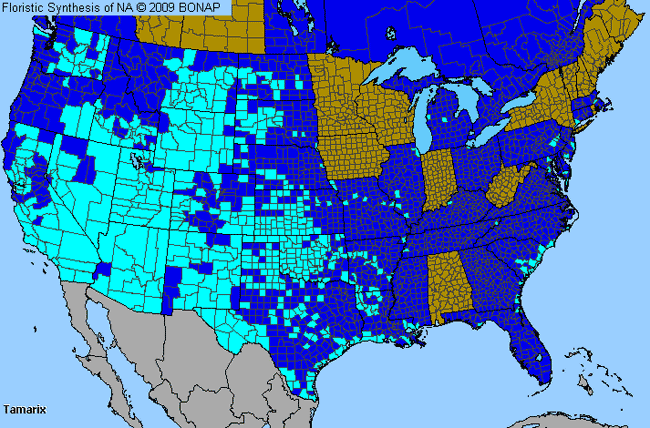Salt-Cedar, Tamarisk (Tamarix)

Salt-Cedar, Tamarisk Genus Details

The tamarisk or salt-cedar is a heath-like shrub or tree that has green stems with very small, scale-like, feathery leaves and attractive pinkish flowers. Several other species are grown in the U.S. that have origins in Africa, Asia, and Mediterranean countries. These trees and shrubs are extremely drought tolerant and have been used for erosion control as sand-binding plants in naturalized plantings along seashores, streams, salt flats and wild areas. Flowering occurs primarily in the southwestern U.S. from spring to autumn, but can occur during most of the year under appropriate environmental conditions. Pollen dispersal is primarily by insects, but can happen by wind in certain conditions. Tamarix dioica, a species native to parts of Asia and cultivated in the U.S., may possess more allergenicity than other Tamarix species.
Salt-Cedar, Tamarisk Allergy Info

Tamarix has been known to cause allergic symptoms. Allergenicity has been reported in the southwestern United States.
Salt-Cedar, Tamarisk Pollen Description

No pollen description is currently available.
Species in This Genus

Allergenicity Legend:
 Mild Allergen |
Mild Allergen |
 Moderate Allergen |
Moderate Allergen |
 Severe Allergen |
Severe Allergen |
 Allergy Test Available
Allergy Test Available
Salt-Cedar, Tamarisk (Tamarix) is a genus of the TAMARICACEAE family.
This genus includes the following allergenic species:
This genus includes the following allergenic species:












